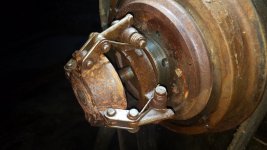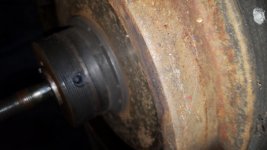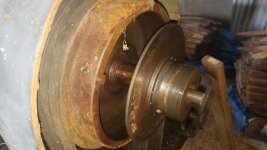Typical171
Plastic
- Joined
- Dec 11, 2016
Hello,
I recently purchased a 1942 16CY. I need to remove the headstock to lighten up the overall weight so I can pick the lathe with my skid steer, so I want to remove the belt pulley guard and to do that it looks like I need to get the clutch pulley assembly off. I'm going to refurb this lathe so I need to remove the headstock anyway. I looked through the forum and found some good info but it seems my clutch is slightly different then the ones I seen posted. Anyway here is a pic of mine. My question is I never had one of these apart and just need to know what and where are any set screws I need to loosen and basically how to remove this assembly. Thanks for the help.
Joe

I recently purchased a 1942 16CY. I need to remove the headstock to lighten up the overall weight so I can pick the lathe with my skid steer, so I want to remove the belt pulley guard and to do that it looks like I need to get the clutch pulley assembly off. I'm going to refurb this lathe so I need to remove the headstock anyway. I looked through the forum and found some good info but it seems my clutch is slightly different then the ones I seen posted. Anyway here is a pic of mine. My question is I never had one of these apart and just need to know what and where are any set screws I need to loosen and basically how to remove this assembly. Thanks for the help.
Joe

















